|
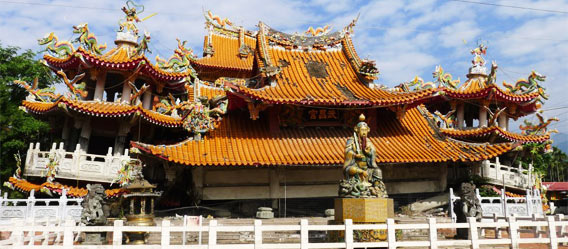
With a long and rich history, traditional Chinese culture can be a difficult topic to discuss with its myriad of information, sub-topics, and its changes through time. This topic can easily cover volumes of books, but in this month’s newsletter, we will take a stab at looking at some of the basics of traditional Chinese culture. We hope that this newsletter will open a window into this wide and deep subject matter for those who may be interested in doing further reading and learning more.
Philosophical Roots
When discussing traditional culture, the subject includes a variety of topics such as cultural believes, identity, art and culture, music, literature, food, folklores and believes, language, architecture, and fashion. For an introduction 101 to traditional Chinese culture, we chose to begin with the philosophical roots to traditional Chinese culture and the thoughts and values that continue to inform Chinese culture to this day.
Confucianism
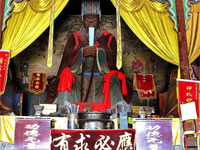 An ethical and value system, Confucianism is sometimes seen and practiced as religion in China, but at its core, it sets forth a series of thought systems that places high value on societal harmony through stable social structures. Confucian lived from 551-479 BCE and his teaching originated during the Spring and Autumn Period in Chinese history, a time of warfare and general societal chaos marked by periods of warfare. An ethical and value system, Confucianism is sometimes seen and practiced as religion in China, but at its core, it sets forth a series of thought systems that places high value on societal harmony through stable social structures. Confucian lived from 551-479 BCE and his teaching originated during the Spring and Autumn Period in Chinese history, a time of warfare and general societal chaos marked by periods of warfare.
While Confucianism has a metaphysical aspect and discusses the sacred and spheres of god known as “tian” or heaven, most of Confucian thought is concerned with the secular world and the humanistic and practical order of society.
Confucianism looks at ethics and morality, listing five constant virtues:
Ren (humanity)
Yi (righteousness)
Li (Proper rites and manners)
Zhi (knowledge)
Xin (Integrity)
Another important Confucian ethical ideal is that of filial piety, which is the virtue of respect for one’s own parents and ancestors.
Placing a high value on relationships between people and kinships as the foundation for societal order, Confucianism emphasizes that harmony is the result of each person understanding and keeping his or her place and duties in relation to others in society. The five relational bonds are between: The ruler and his/her subjects, father to son, husband to wife, elder sibling to younger sibling, and friend to friend.
Confucianism although an ancient ethical and value system continues to be higher relevant to Chinese culture today and continues to inform many of the values held in high regard by Chinese communities, families, and individuals.
While Chinese culture is informed by a variety of school of thoughts including: Taoism, Buddhism, and Legalism, Confucianism continues to be a key philosophical bedrock for Chinese thoughts and culture.
Culinary Culture
Beyond the philosophical thoughts of traditional Chinese culture, when discussing the topic of traditional Chinese culture, the importance of food and culinary cannot be ignored.
Because of its large geographic size, Chinese food, like Chinese culture is a very varied topic and can vary greatly from region to region. The diets, ingredients, tastes, cooking styles can be greatly different even within Chinese cuisine from the various regions across China.
However, as much as there are differences, there are also unifying similarities when it comes to Chinese culinary culture.
Tea
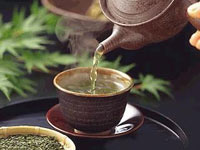 A common denominator and a well-loved and popular beverage for Chinese is tea. Originating in china, tea leaves, also known as camellia sinensis, are enjoyed all across China despite regional differences. Legend has it that the Chinese emperor Shen Nong in 2737 BCE was sitting by a shrub when a leaf fell into boiling water and hence tea was discovered. A common denominator and a well-loved and popular beverage for Chinese is tea. Originating in china, tea leaves, also known as camellia sinensis, are enjoyed all across China despite regional differences. Legend has it that the Chinese emperor Shen Nong in 2737 BCE was sitting by a shrub when a leaf fell into boiling water and hence tea was discovered.
Tea is enjoyed by the Chinese at all times of the day. Tea is often consumed at breakfast, lunch, and dinner. In fact, tea is such an integral part of Chinese culture, that elaborate tea ceremonies, even tea stunt performances have evolved around this drink. So important is tea in Chinese culture that tea is served to one’s parents and elders as part of the traditional Chinese wedding ritual as a form of respect and gratitude. Elaborate and beautiful tea wares are also developed from various regions in China to be used to enjoy this well-loved beverage.
Rice
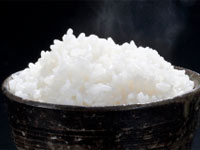 Another common denominator across the Chinese regions is the presence of rice as a form of staple. Early rice grew along the Yangtze river in the Southern provinces of China. Although wheat based products such as noodles and buns are featured as staples in the Northern parts of China in ancient times. Today, rice plays an important and indispensible role in Chinese culture and in Chinese diet. Typically during meals, rice is served individually in rice bowls and the rice is eaten as a companion to other Chinese dishes. Another common denominator across the Chinese regions is the presence of rice as a form of staple. Early rice grew along the Yangtze river in the Southern provinces of China. Although wheat based products such as noodles and buns are featured as staples in the Northern parts of China in ancient times. Today, rice plays an important and indispensible role in Chinese culture and in Chinese diet. Typically during meals, rice is served individually in rice bowls and the rice is eaten as a companion to other Chinese dishes.
However, the place of rice in traditional Chinese culture exceeds its dominance as a form of staple in Chinese diet. Rice has great significance in traditional Chinese culture, from being a symbolism of wealth, to being a key ingredient to a variety of celebratory festival food items. From glutinous rice cakes during the Chinese New Year, to glutinous rice dumplings eaten during the dragon boat festival, to rice dumplings eaten on Winter Solstice, rice is an important component and the basis of the fabric of many traditional Chinese food items and many traditional Chinese cultural practices.
Chopsticks
Another commonly found unifying item when discussing traditional Chinese culture and cuisine is the utensil—chopsticks. Originating in China, chopsticks are said to be invented as early as the Shang dynasty from 1766 to 1122 BCE. Chopsticks are two parallel sticks of equal length that are used to pick up food items. Chopsticks are widely used in East Asia and in some Southeast Asian countries as well.
Elaborate etiquettes surrounding proper chopsticks use at meals have evolved for the various countries. Similarly in Chinese tradition, there are ways to use the chopsticks to pick up and enjoy food items that are considered polite and other ways that are considered impolite.
Art
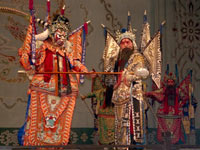 With its long history, Chinese culture boasts of many art forms and many renowned Chinese artists. Chinese art forms include literary art forms, of which, poetry is considered a high literary art form. Chinese art also includes visual arts such as calligraphy, Chinese ink brush painting. Performance arts include music, dance, and various forms of Chinese opera. With its long history, Chinese culture boasts of many art forms and many renowned Chinese artists. Chinese art forms include literary art forms, of which, poetry is considered a high literary art form. Chinese art also includes visual arts such as calligraphy, Chinese ink brush painting. Performance arts include music, dance, and various forms of Chinese opera.
Calligraphy
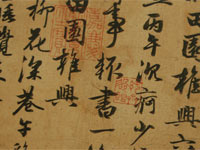 Chinese characters have a long history and can be traced as far back as 4000BCE. There is a distinct pride and love of the forms of the Chinese characters that are derived from pictorial origins. Calligraphy as an art form celebrates the form and beauty of the Chinese characters. Chinese characters have a long history and can be traced as far back as 4000BCE. There is a distinct pride and love of the forms of the Chinese characters that are derived from pictorial origins. Calligraphy as an art form celebrates the form and beauty of the Chinese characters.
Over the years, various schools of calligraphical thoughts and practices have evolved each with distinct styles, rules and practitioners. Many people practicing calligraphy spend many years perfecting their techniques and their crafts. Even for those who desire to have an in-depth appreciation of Chinese calligraphy requires years of study into the differences in styles and the elements of what makes an attractive work of calligraphy, as well as the principles of aesthetics when it comes to calligraphy as an art form.
Poetry
A highly regarded literary art form, Chinese poetry, like the language, has a long history. While there are many sub-divisions to the type of Chinese poems, the two most famous and widely-known are “shi” and “ci”.
“Shi” are more traditional forms of poetry, typically there are different guidelines to Chinese poetries. For example, there many be line length, number of lines, tonal patterns within each line, rhyme scheme, mandatory parallelism restrictions.
“Ci” is a variation of “shi” and became most popular during the Song dynasty. “Ci” can be translated to mean lyrics, and are usually used to accompany a piece of music. Even though much of the music is lost, “ci” can still be appreciated on its own as a poetic form because of their metered and rhyming patterns and overall harmonious literary structure.
Conclusion
The topic of traditional Chinese culture is indeed an interesting and varied subject, and great depth can be delved into regarding the subject. We hope that this month’s newsletter was able to offer an interesting window to the introduction of this subject of traditional Chinese culture. Please feel free to browse our other newsletters to learn more about various aspects of traditional Chinese culture, as well as other East Asian and Southeast Asian cultures.
| 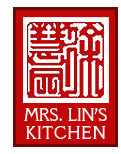

 An ethical and value system, Confucianism is sometimes seen and practiced as religion in China, but at its core, it sets forth a series of thought systems that places high value on societal harmony through stable social structures. Confucian lived from 551-479 BCE and his teaching originated during the Spring and Autumn Period in Chinese history, a time of warfare and general societal chaos marked by periods of warfare.
An ethical and value system, Confucianism is sometimes seen and practiced as religion in China, but at its core, it sets forth a series of thought systems that places high value on societal harmony through stable social structures. Confucian lived from 551-479 BCE and his teaching originated during the Spring and Autumn Period in Chinese history, a time of warfare and general societal chaos marked by periods of warfare.  A common denominator and a well-loved and popular beverage for Chinese is tea. Originating in china, tea leaves, also known as camellia sinensis, are enjoyed all across China despite regional differences. Legend has it that the Chinese emperor Shen Nong in 2737 BCE was sitting by a shrub when a leaf fell into boiling water and hence tea was discovered.
A common denominator and a well-loved and popular beverage for Chinese is tea. Originating in china, tea leaves, also known as camellia sinensis, are enjoyed all across China despite regional differences. Legend has it that the Chinese emperor Shen Nong in 2737 BCE was sitting by a shrub when a leaf fell into boiling water and hence tea was discovered. Another common denominator across the Chinese regions is the presence of rice as a form of staple. Early rice grew along the Yangtze river in the Southern provinces of China. Although wheat based products such as noodles and buns are featured as staples in the Northern parts of China in ancient times. Today, rice plays an important and indispensible role in Chinese culture and in Chinese diet. Typically during meals, rice is served individually in
Another common denominator across the Chinese regions is the presence of rice as a form of staple. Early rice grew along the Yangtze river in the Southern provinces of China. Although wheat based products such as noodles and buns are featured as staples in the Northern parts of China in ancient times. Today, rice plays an important and indispensible role in Chinese culture and in Chinese diet. Typically during meals, rice is served individually in  With its long history, Chinese culture boasts of many art forms and many renowned Chinese artists. Chinese art forms include literary art forms, of which, poetry is considered a high literary art form. Chinese art also includes visual arts such as calligraphy, Chinese ink brush painting. Performance arts include music, dance, and various forms of Chinese opera.
With its long history, Chinese culture boasts of many art forms and many renowned Chinese artists. Chinese art forms include literary art forms, of which, poetry is considered a high literary art form. Chinese art also includes visual arts such as calligraphy, Chinese ink brush painting. Performance arts include music, dance, and various forms of Chinese opera.  Chinese characters have a long history and can be traced as far back as 4000BCE. There is a distinct pride and love of the forms of the Chinese characters that are derived from pictorial origins.
Chinese characters have a long history and can be traced as far back as 4000BCE. There is a distinct pride and love of the forms of the Chinese characters that are derived from pictorial origins. 